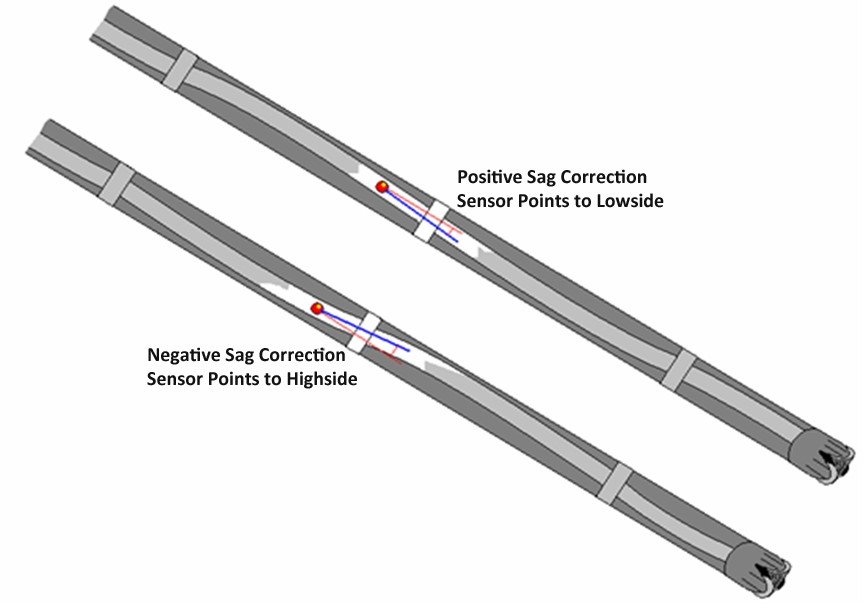
Sag Correction Software
Since finite element software or mechanical beam theory techniques are used anyway to model the side forces and stresses on a BHA as part of its performance design, the same software calculates the deflected shape of the BHA and can predict in advance the corrections needed to apply to the observed inclination. This is often the most important correction required for high angle drilling accuracy for good TVD placement. In the above example, there is also a mechanical bend in the BHA at the bent housing so the sag correction may not be just inclination dependent but may also be toolface dependent if the assembly has a bend that can be oriented.

Generally at low inclinations sag will be minimal but as it is mainly due to gravity effects, the magnitude is likely to increase with the sine of the inclination. Here is a typical sag sheet with corrections over a range of inclinations.
Sag Sheet
Sensor Position = 55.43 ft
| Inc | Sag (deg) | Inc | Sag (deg) |
| 0.0 | 0.000 | 60.0 | 0.177 |
| 5.0 | 0.018 | 65.0 | 0.186 |
| 10.0 | 0.036 | 70.0 | 0.193 |
| 15.0 | 0.053 | 75.0 | 0.198 |
| 20.0 | 0.070 | 80.0 | 0.202 |
| 25.0 | 0.087 | 85.0 | 0.201 |
| 30.0 | 0.102 | 90.0 | 0.201 |
| 35.0 | 0.118 | 95.0 | 0.201 |
| 40.0 | 0.132 | 100.0 | 0.202 |
| 45.0 | 0.145 | 105.0 | 0.198 |
| 50.0 | 0.157 | 110.0 | 0.193 |
| 55.0 | 0.168 | 115.0 | 0.186 |
| 60.0 | 0.177 | 120.0 | 0.177 |
Care should be taken when using bent housings in the BHA since the sag correction will then be toolface dependent. In such cases, the sag should be calculated on site using software which can include the bend in the finite element analysis when applied at any toolface.
It is recommended that any well that build above 45 degrees at any point should be sag corrected as a matter of course. This is a service that most drilling contractors can easily include and the effect on TVD accuracy is often dramatic.
If we use the approximate rule of thumb that 1 degree of angle produces 2% of distance as an error in position, even a small inclination error like 0.25 degrees will produce 0.5% of step out as an error in TVD. For example, if the step out to a reservoir entry point was 3000 ft, the TVD error would be + or – 15 ft for only a quarter of 1 degree of sag.
In the analysis of misplaced wells identified by poor production or a poor match with expected geological formation depths, the lack of sag correction is the most common cause. The cost of carrying out sag correction is far outweighed by its benefits in terms well positioning particularly at the entry point to the reservoir.


Post your comment on this topic.